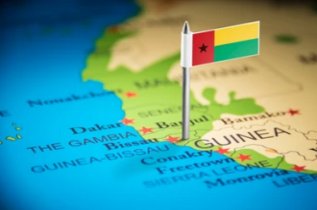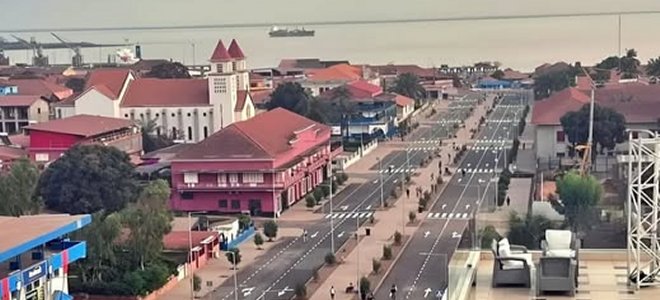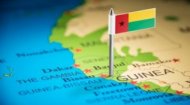|
Bissau Profile |
Bissau Profile |
Bissau Profile | Bissau Profile |
 |

|
Bissau, along with the rest of Portuguese Guinea, was administered from Cape Verde until 1879, when Guinea-Bissau became a colony in its own right with Bissau as its capital in 1941, reflecting its growing importance as an administrative and military centre. It retained that status until 1973 when the African Party for the Independence of Guinea and Cape Verde unilaterally declared independence from Portugal and established Madina do Boé as the de facto capital of the country, however after Portugal recognised independence on 10th September 1974, Bissau was restored as capital city. That independence did not bring lasting peace. A devastating civil war in 1998-1999 tore the city apart, and the physical scars are still visible today, most notably in the bullet-riddled shell of the former Presidential Palace. This ruin stands not as a monument to be rebuilt, but as a sombre, ever-present reminder of the fragility of the peace and political instability that has long plagued the nation. In fact, little has been redeveloped since that time. Bissau's formal economy is small given its population is only around 500,000 (2025), and dominated by government jobs and a handful of foreign-owned businesses. The city's economic lifeblood is its port, through which the nation's primary cash crop, cashew nuts, is exported along with fish and peanuts. As such, the fortunes of many Bissau-Guineans rise and fall with the global price of cashews. The vast majority of residents, however, operate within the sprawling informal economy. From the women selling fresh bread and fruit on street corners to the mechanics working in open-air garages, and a burgeoning major drugs hub, this is where the city's real hustle happens. The Mercado de Bandim is the chaotic epicentre of this commerce. In this sprawling market, you can find everything from fresh fish and vegetables to colourful textiles and traditional medicines. Life in Bissau moves at its own pace, a blend of languid, heat-of-the-day stillness and bursts of energetic activity reflecting the city's melting pot of diverse ethnic groups, including Pepel, Mandinga, Fula, and Balanta. While Portuguese is the language of government and education, the true language of the streets, markets, and homes is Kriolu. This expressive creole is a powerful unifying force, binding people from different backgrounds together. The social profile of Bissau is woven from tight-knit family and community ties. Hospitality is paramount, and it's common to see neighbours sharing meals, children playing together in dusty courtyards, and elders holding court on plastic chairs in the shade. Picture wide avenues shaded by ancient mango and acacia trees, their branches arching over crumbling, pastel-coloured colonial buildings! Music is the city's soul, with the rhythms of Gumbé often spilling out from local bars and homes, providing the soundtrack to daily life. A day in Bissau begins early, with the streets filling with yellow taxis, motorbikes, and the iconic blue-and-white toca-toca minibuses. Today, Bissau faces many challenges. Decades of political instability have starved the city of investment and the persistent threat of coups and political gridlock hampers long-term development plans as well as deterring foreign investment. The consequences are visible everywhere with the city growing rapidly without proper planning, leading to the expansion of informal settlements that lack basic services. As such, many neighbourhoods lack reliable electricity, clean running water, and sanitation systems. Power cuts are a daily occurrence. Youth unemployment is alarmingly high, forcing many into informal work and a lack of organised waste collection has also created significant public health and environmental issues in many parts of the city. In terms of attractions for the visitor, Bissau offers a unique and authentic experience far from the beaten path. Its attractions are less about polished monuments and more about historical resonance and living culture: |








